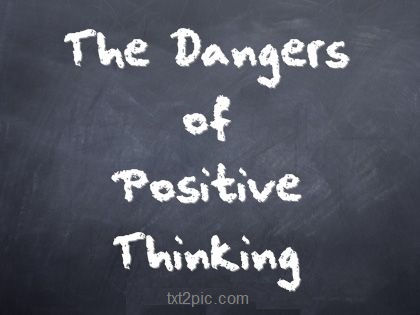
Image
Do you trim your grass with scissors?
I’m guessing most of you don’t, and if you saw your neighbour doing it, you’d think they were pretty crazy. But some of you are probably doing the equivalent somewhere in your lives. Perfectionism – for which the desire for all your grass to be the same, appropriate length seems an effective metaphor – can drive us to great heights of achievement. It can also paralyse us and ruin our enjoyment of what we have.
What is perfectionism?
Perfectionism is a strong desire or drive to control the outcomes of everything you do, to create the best possible result – to be perfect. For some people, it’s about working extraordinarily long hours, for others it’s about making sure their house is always the picture of tidy perfection. For some it’s about never allowing someone to see them struggling. It’s about not allowing what you feel are sub-standard results from your endeavours. Sounds like a good thing, surely? Don’t we all want to be the best we can be?
Sure! Nobody wants to be crap. Perfectionism can be motivating; high performers of all kinds have a tendency to perfectionism and use it to help them succeed. For others, anxious people for example, it can be a trait borne of the need to control everything, to make sure everything stays OK, so that everything that happens is as expected. No surprises, no terrible outcomes. After all, surprises become cave lions and none of us want to run into one of those.
What’s the cost of perfectionism?
Perfectionism can be costly. Many perfectionists judge themselves extremely harshly, and this can impact their self esteem, because more often than not, their standards are unattainable. They can never be good enough. They also tend to judge others by their own, unreasonable standards, and so nobody in their lives “measure up” either. This Judgy McJudgerson attitude can cost you relationships and make you miserable.
Being perfect is tiring. Just being an average adult human being is hard enough, so constantly putting yourself under pressure to the The Perfect You is just plain exhausting. All that worry about not getting it right costs you energy and time.
Perfectionism is constantly looking to the future – you must do better. It also looks to the past – I didn’t do that as well as I should have. There’s the McJudgersons again. Perfectionism gets in the way of being in the moment and enjoying who you are, and what you have now.
Perfectionism can cause paralysis – the ultimate demotivation of not wanting to do something at all, if you can’t do it perfectly.
What we gain once we accept imperfection
Once we accept imperfection, we free ourselves to learn from our mistakes, because we allow ourselves to make them. We’re more productive, because we’re no wasting all that time making sure everything is perfect. We’re also nicer to be around, because we get to put Judgy McJudgerson away. We take more risks, and risks are where the rewards are. We can relax more, enjoy the moment and also reap the rewards of all that extra energy. Doesn’t all that sound great?
Five ways to train yourself out of perfectionism
You can retrain your brain out of perfectionism, if it’s bothering you. Here are five ways to experiment with:
1 Create standards, not rules
When you’re a perfectionist, you make a lot of rules for yourself. If the house isn’t clean, I’m a bad mother. If I don’t do the best job, I’m not good enough. These are rules. Try swapping them for standards, which are more flexible and more broad. I will make sure the house is clean once a week (or if you’re me, a month if you’re lucky). I’ll do the best I can in my work, but I won’t do more than two hours of overtime a week. I’ll mow that grass every few months, when I notice it’s long.
Think about the rules you’ve made for yourself, and try out some standards instead. They take the pressure of and give you some room to move.
2 Practice imperfection
There’s a musical term, “close enough for jazz”. “Near enough is good enough” is another way of putting it. Everything you do doesn’t have to be perfect. So practice imperfection. Do a task until it is to a standard you feel would be acceptable to the average person. Remember, if you’re doing something for someone else, don’t exhaust yourself trying to deliver a Rolls Royce when they probably asked for – and would be very happy with – a Toyota Camry. It doesn’t matter if my grass is uneven.
This will feel very difficult at first – practice. It gets easier.
3 Life is a draft
Life is never finished (until it really is). Everything you throw out into the world is a draft – nothing is permanent. Seth Godin talks about tattoo thinking. Hell, even tattoos aren’t permanent, and your decisions aren’t either. Remember that in risk there can be great reward – but you have to risk being wrong. That’s OK. If you’re wrong, you can change your decision. It’s not a tattoo. If you don’t like the length of your grass, you can always mow it shorter next month.
4 Give yourself a time limit
Perfectionists work on their creations far longer than the average person, constantly re-working them, never happy with the draft. So give yourself a time limit, and at the end of that time, the task is done. Submit it,make that decision, mow the grass for an hour, move on. Remember “close enough for jazz”; you’ll get a lot more done with your time.
5 Divorce yourself from the outcome
Practice distancing yourself from whatever it is you want to be perfect. This one is tough, because you need to practice saying “I don’t give a shit”. Practice not caring so much. You may think that people will think less of you, but trust me, they’re hardly thinking about you at all; they have their own stuff to be worrying about. So what if the house isn’t clean? So what if that report was sent off in draft instead of in Rolls Royce standard? So what if my grass isn’t even? Will anyone die?* No? OK then.
Stop trimming your grass with scissors
You might be reading these and thinking “Well this is all well and good, but I’LL know it’s not perfect and I can’t let that happen. That’s just not me.” That’s your brain’s perfectionistic habit kicking in. Don’t listen to that voice – just keep practicing letting go of perfection so your brain can develop some new messages. However you’ve developed perfectionism, it’s not something you have to live with. Practice these techniques over and over and soon you’ll find you’ve developed a better perspective.
Isn’t it time you put the scissors down and enjoyed the grass?
* OK if you’re a brain surgeon then perfection really does save lives so if that’s you, keep doing what you’re doing. You’re awesome.







